- Learn how to lower the humidity of your indoor grow with effective techniques such as improving air extraction, using dehumidifiers, and natural methods. Create the optimal environment for your plants.
- Learn how to calculate air extraction for your indoor grow
- Fusarium Fungus in Cannabis Crops: Learn to Prevent It
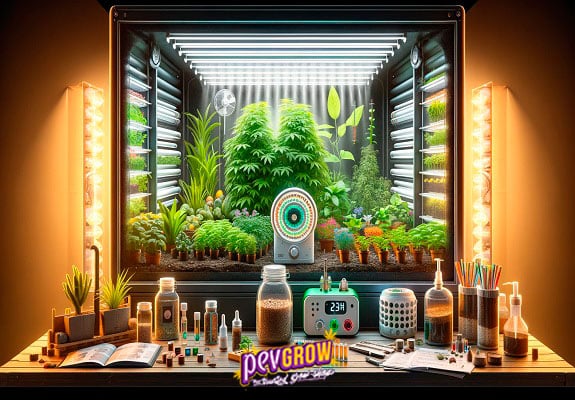

In constant struggle for the regulation of cannabis, mainly in the medicinal field.
15-04-2024 08:00:00 - Updated: 15 April, 2024
Managing humidity in Grow tents is a fundamental aspect to ensure an optimal environment for the development and growth of plants. A high level of humidity can create conditions conducive to the appearance of diseases and pests, negatively affecting plant health. In this article, we will explore various techniques to reduce humidity in indoor grows, starting with improving air extraction and then covering additional alternatives such as the use of dehumidifiers, fans, absorbent materials, among others. Let’s get started!
📲Understanding Humidity in Indoor Growing
Humidity refers to the amount of water vapor present in the air, being a critical factor for the environment of any grow space. In Grow tents, humidity tends to accumulate due to limited air circulation and plant transpiration. While a certain level of humidity is necessary for healthy plant growth, too much can lead to problems such as the development of fungi and diseases, as well as difficulties in nutrient absorption.
The negative effects of excessive humidity include the appearance of mold, root and stem rot, and an environment prone to pests. Therefore, precise humidity control is essential to avoid these issues and ensure a thriving grow. Air extraction is a key mechanism in regulating humidity within an indoor grow cabinet. By extracting air from the inside and allowing fresh air to enter from the outside, not only is the environment renewed but also humidity levels are controlled. The relationship between air extraction and humidity levels is direct; by increasing extraction, the removal of humid air is facilitated, thereby reducing the overall humidity of the space.
✅ Methods to Lower Humidity in Cannabis Grow Cabinets
The effective implementation of extraction systems requires the proper selection of air extractors, which can vary in size and capacity according to the volume of the grow cabinet. It is crucial to choose an extractor that can renew the air in the cabinet at least every minute. Additionally, the installation of ventilation tubes can help direct airflow efficiently, ensuring that humid air is expelled from the space and replaced with fresh air. Passive ventilation, through openings or grilles, complements the action of the extractors, facilitating constant air exchange, but it is always advisable to install extractors to introduce air into the grow cabinet.
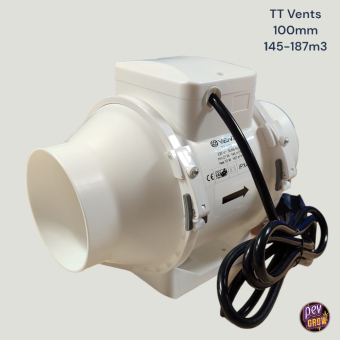 |
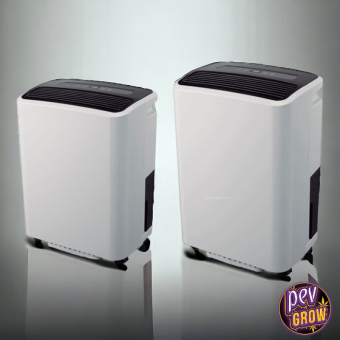 |
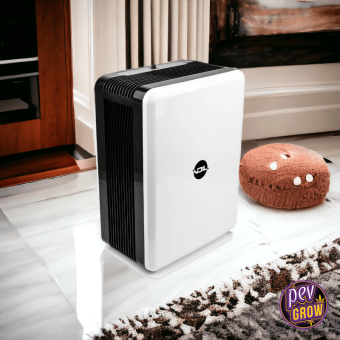 |
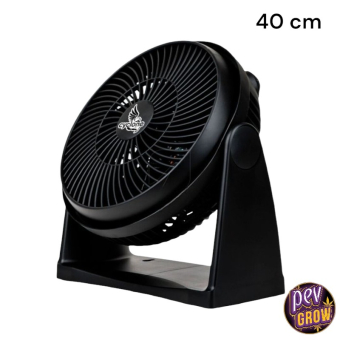 |
| Buy Vents TT Air Extractor 2 Speeds | Buy Dehumidifier 30/50L | Buy Dehumidifier VDL DryBox 12L | Buy Cyclone Floor Fan Ø 40cm |
|---|
🚀 Other Methods to Decrease Relative Air Humidity
Using Dehumidifiers
Air dehumidifiers are especially useful in areas where ambient humidity is high. These devices extract water from the air, helping to lower the humidity in the cabinet and maintain it at optimal levels for growing. When choosing a dehumidifier, it is important to consider the size of the grow space and select a model with the adequate capacity for the volume of air to be treated.
Placement of Fans
Fans improve air circulation within the grow cabinet, evenly distributing humidity and temperature. By using fans, invisible pockets of humidity and areas with stagnant air are avoided, reducing the risk of plant disease development. Fans should be strategically placed to ensure effective air movement without damaging the plants with direct air currents.
Moisture Absorbing Solutions
There are hygroscopic materials, such as silica gel bags or calcium chloride desiccants, that absorb moisture from the air. These can be placed at different points within the grow cabinet to help lower humidity levels in Grow tents. Additionally, homemade methods such as dishes with salt can also be effective in small spaces, acting as natural moisture absorbers.
Natural and Homemade Methods
In addition to dishes with salt, which is the cheapest but least effective solution, other natural solutions include the use of moisture-absorbing plants or the placement of containers with activated charcoal, which is known for its absorbent properties. These solutions can be complementary and offer an ecological and economical alternative for humidity control.
✨ Additional Considerations
When implementing strategies for humidity control, constant monitoring of humidity levels is crucial using hygrometers, thermohygrometers, or digital weather stations. This allows for precise and timely adjustments to the air extraction system, dehumidifier settings, and the use of other control methods. Additionally, it is important to keep in mind that humidity needs may vary during the different growth phases of the plants, requiring adjustments in the humidity control strategy.
The balance between temperature and humidity is also vital, as both factors are interrelated and directly affect the well-being of the plants. Proper humidity control not only prevents health problems in plants but also improves the efficiency of photosynthesis and the overall development of the grow.
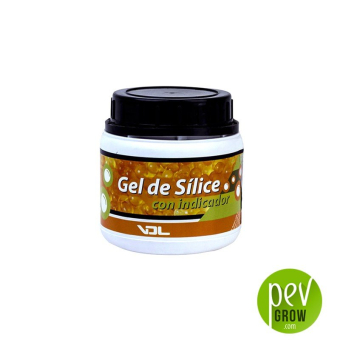 |
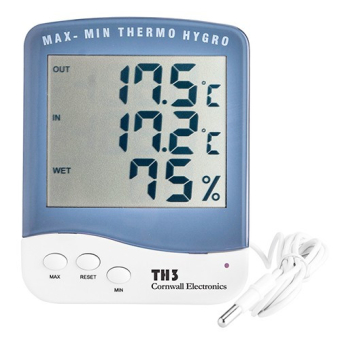 |
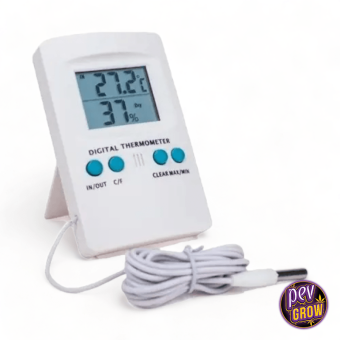 |
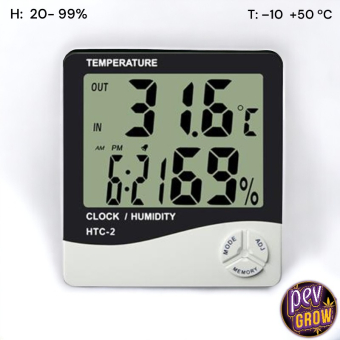 |
| Buy Silica gel 500gr | Buy Digital Thermohygrometer with Probe TH3 | Buy Digital Thermohygrometer with probe | Buy Digital Min-Max Thermo-Hygrometer ESSENTIALS |
|---|
⛳ Conclusion
Effective humidity control in indoor growing is essential to ensure an optimal environment for the growth and development of plants. Combining adequate air extraction with other methods such as the use of dehumidifiers, fans, and absorbent solutions can be very helpful in lowering the humidity of the grow cabinet. By implementing these strategies and conducting constant monitoring, a healthy and productive growing environment can be created. Remember that the key is to adapt the solutions to the specific needs of your grow, thus ensuring a fungus-free cultivation and the success of your indoor garden. If you want to see other good tips in this regard, I invite you to read this other article that talks about how to prevent the appearance of fungi in marijuana crops.
⭐ FAQs
Why is it important to control humidity in an indoor grow cabinet?
Controlling humidity is vital to prevent diseases, pests, and growth problems in plants, ensuring an optimal environment for their development.
How can air extraction help control humidity?
Air extraction renews the environment within the grow cabinet, removing humid air and thus reducing overall humidity levels.
What other methods are there to reduce humidity besides air extraction?
In addition to air extraction, dehumidifiers, fans, absorbent materials such as silica gel bags, and homemade solutions like dishes with salt can be used to control humidity.
How to select a suitable dehumidifier for my indoor grow?
Select a dehumidifier based on the size of your grow space and the device’s capacity to remove the necessary amount of water to achieve optimal humidity levels.
Is it necessary to adjust humidity control during the different growth phases of the plants?
Yes, plant humidity needs vary during their different growth phases, so it is important to adjust humidity control strategies according to these needs. During germination and seedling stage, it is better to be around 90%, during the vegetative growth phase it should be between 60% and 80%, when moving to flowering it should be lowered to 50%, and from the appearance of the buds, as low as possible.






“Olé, olé, and olé! You have no idea what a mess I had in my grow closet with the humidity, it was non-stop, what a mess. But thanks to this article, I’ve managed to lower it perfectly. I followed the little tips to the letter and, voilà!, as if I had cast a spell, the humidity started to drop. I’m happier than a clam at high tide. Thanks, buddies, for sharing these handy little tricks! From Granada, I send you a hug and loads of thanks, this is the way to do it!”